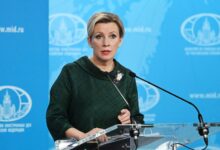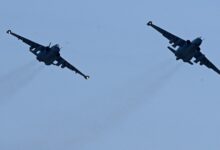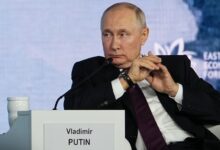
The controversial PMC will apparently not return to the frontlines against Ukraine, and its leader has gone into exile
By Vladislav Ugolny, a Russian journalist born in Donetsk
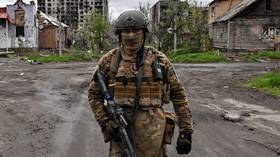
FILE PHOTO: A service member of Russia’s private military company Wagner Group. © Sputnik / Evgeny Biyatov
The events instigated by the Wagner private military company (PMC) on June 23-24 were influenced by several military and political factors. Russia’s leadership managed to deal with the mutiny in less than 24 hours. However, the reasons behind the incident still weigh the Russian army down and need to be addressed. In fact, the future of the military campaign in Ukraine depends on how promptly Moscow learns from this experience.
Wagner tactics and the key to their success
To better understand the conflict between Wagner PMC and the Russian Ministry of Defense, we must go back to the events of last year. At that time, the group, which had earlier been involved in combat in both Africa and in the Middle East, was hired to help capture the fortified area of Popasnaya and then Artemovsk (Bakhmut), in the Donbass. The scale of this operation was so large that Wagner essentially became an army corps – a rather autonomous unit with its own infrastructure, command, and tactical direction.
At the same time, the group was considered light infantry. Making use of small assault units like Wagner which were directly backed by artillery, the Russian command wanted to escape dead-end positional warfare.
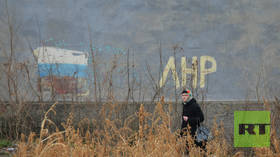
Read more
Such tactics were used not only by Wagner but by units like the 1st Donetsk Army Corps. Moreover, the unique experience of assault operations gained in the year of combat resulted in the formation of “Storm Z” assault units that operate with Wagner-like tactics and have a similar structure.
However, Wagner became the best-known example of Russian stormtroopers. This was largely due to its independent media resources and success. By the time the battles for Artemovsk ended, Wagner had hopes of acquiring the status of an independent structure within the armed forces, autonomous from the Russian Ministry of Defense and subordinate directly to the President of the Russian Federation.
Competing for recruits and Prigozhin’s dark PR
Internal rivalry became one of the main reasons for the clash between Wagner and the Ministry of Defense. Earlier this year, Wagner was restricted in recruiting volunteers from prisons, who were instead assigned to regular units, including Storm Z. Accordingly, in recent months, Wagner could only rely on normal recruitment offices and was forced to compete for each candidate. Considering the severe fighting in the Artemovsk area, each recruit became priceless.
In order to win people over to his side, the company’s founder Yevgeny Prigozhin developed the Wagner brandand boosted his media presence. The group was presented as an ideologically like-minded community, a military caste, a corporation with its own values and code of honor.

Read more
When he exhausted regular marketing methods, Prigozhin made use of dark PR to win over recruits from his competitor, the Ministry of Defense. Prigozhin’s media outlets presented the regular units of the Russian army as incompetent, bureaucratic structures capable only of retreat. The peak of this dark PR campaign coincided with the last days of the battle for Artemovsk.
Prigozhin and his media deliberately exaggerated certain issues in the Russian army in order to attract any war’s most valuable resource – men ready to take up arms.
This is not the first time that the Wagner Group and Prigozhin have resorted to such methods. A similar problem had earlier occurred with the militias of Novorossiya. During the relative lull in fighting after the signing of the Minsk Agreements, Wagner recruited Donbass veterans [from the 2014 fighting] for military operations in the Middle East and Africa, to the detriment of local forces. Persuading the fighters to stop risking their lives for a meager salary, Prigozhin encouraged them to join Wagner for a much bigger monetary reward.
Expectations vs. reality
Unsurprisingly, the Ministry of Defense didn’t particularly enjoy all the mud poured on it by Prigozhin. As a result, a long conflict ensued between the PMC, top officials, and the General Staff of the Russian Armed Forces – a feud that smoldered for a long time. After the liberation of Artemovsk, the victorious Wagner units proceeded to their camps for rotation and replenishment.
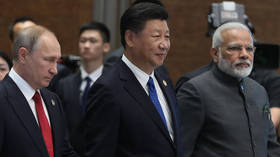
Read more
Apparently, Wagner fighters expected to recover by July and act as an operational reserve in the Zaporozhye direction, which many Russian analysts considered the most vulnerable section of the front during the Ukrainian offensive.
Prigozhin counted on a triumph for his forces. He envisioned the Russian defenses broken and the enemy advancing on Melitopol and Berdyansk, and foresaw Wagner fighters marching in and saving Russia. This would have left Prigozhin as a savior and allowed him to push his own agenda forward, presumably including the replacement of some of the military top brass.
The Russian army, however, was becoming stronger, after recruiting hundreds of thousands of new solders. Some volunteers, others conscripts.
The Ministry of Defense began trying to rein in private military companies, including the largest one, Wagner PMC. At this point, Prigozhin realized his position was under threat. That led to the events of late June.

Read more
What’s next?
As of now, we know that Prigozhin has apparently moved to Belarus. Some Wagner members are set to join him. However, the exact number is not known.
In June, the Wagner Group numbered about 25,000 fighters, not counting the attached units of the Russian Armed Forces, such as the 305th Artillery Brigade.
It’s most likely that the greater part of the Wagner Group will be integrated into other army divisions, or may even retain a certain level of autonomy. However, it will cut ties with Prigozhin, who is now considered to be a rogue figure.
All this will require time. Until the process is complete, the potential of the Russian army will be reduced, compared to what it could have been if not for the events of June 23-24.
